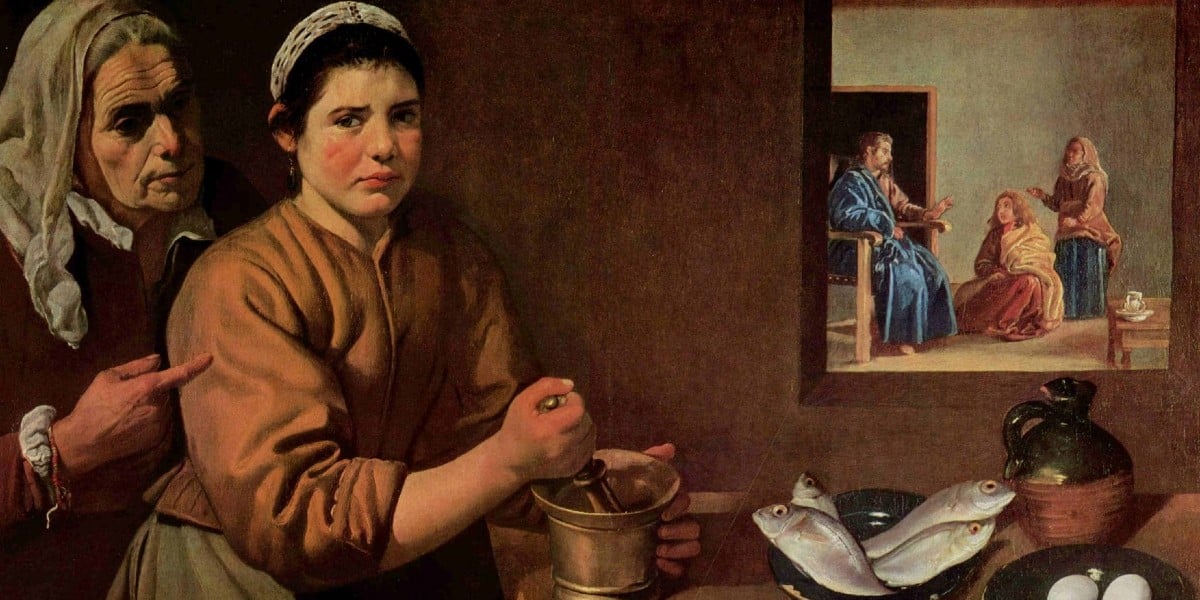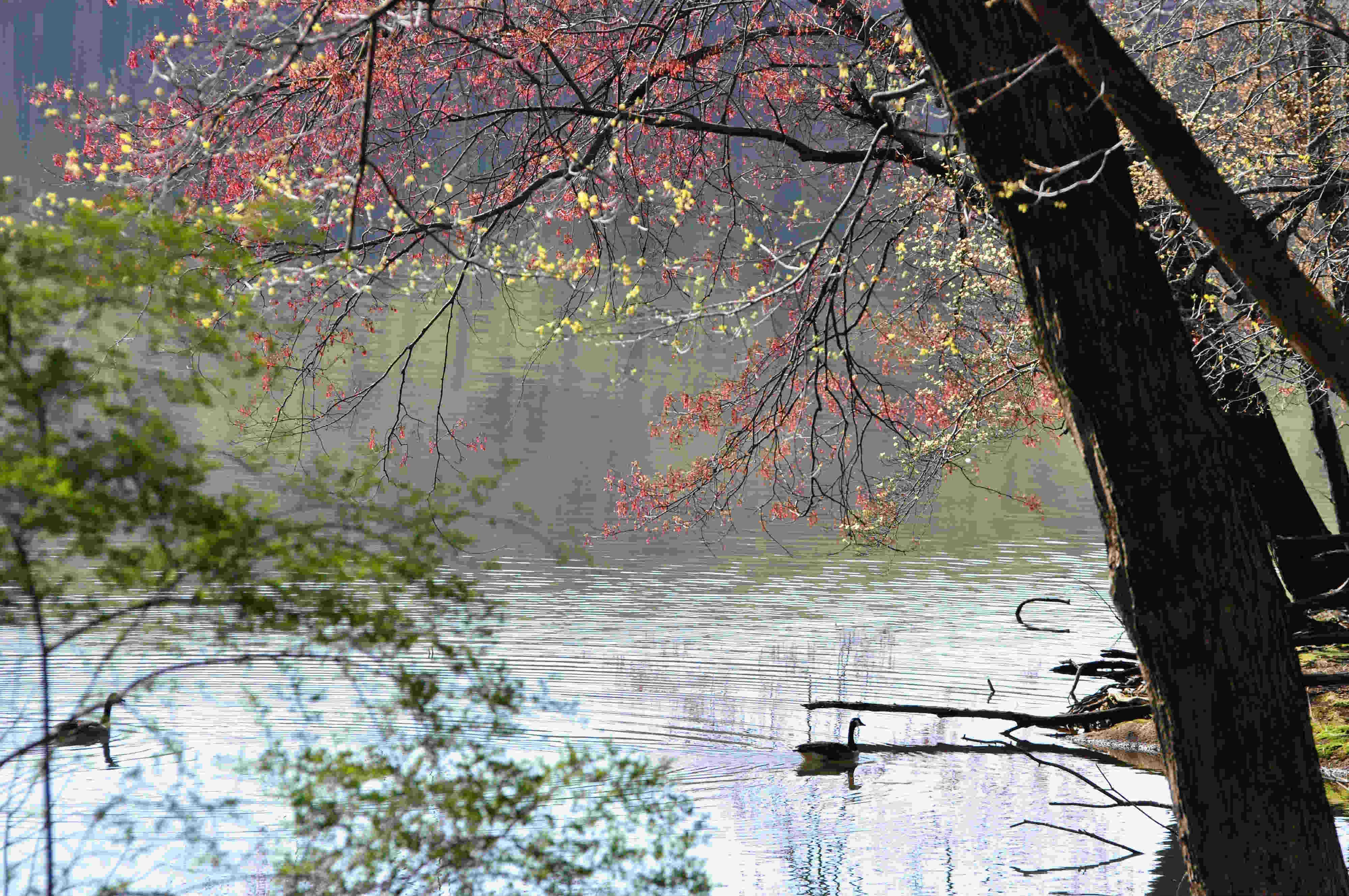Regina Caeli – Queen of Heaven, Rejoice!
The Regina Caeli, Latin for “Queen of Heaven,” is a hymn and prayer ...

All Christians, even the busiest among us, are called to contemplative, even mystical, prayer. Here are a few tips on how to experience contemplation even in the midst of action.
For many, the words “contemplative life” conjures up images of robed monks in choir stalls or veiled nuns behind metal grates. A chosen few of these sequestered people appear to be favored with revelations from on high. These we call mystics.
Since most of us are called to an active life, we assume that we are disqualified from contemplation. And to think we could be mystics would be simply an act of pride or worse, an indication that we might need psychiatric help.
But if we look a bit deeper into the Catholic tradition, we see that contemplative, mystical prayer is actually a normal part of the Christian life to be experienced by everyone. Certainly there are religious orders especially dedicated to contemplation. But there are also orders, like the Missionaries of Charity, especially dedicated to works of mercy. Does that mean that the rest of us can forget about mercy? Special vocations like these exist to be a perpetual reminder to all of us of something we too are called to be and do.
If we look into both Old and New Testament, we see very active people called by God to special moments of contemplative prayer. Moses spent forty days and nights with God on Mt. Sinai. Elijah encountered God in a still, small voice, and found restoration and renewed vision. The Lord Jesus himself often withdrew to spend hours in prayer.
But the best example of contemplation in the midst of action is the story of Martha and Mary (Luke 10). Jesus comes to visit. Martha fusses. Mary stops, sits at his feet, and listens. She gives him her undivided attention.
This is our part in making contemplative prayer happen. We simply make ourselves available to God and focus on his presence. And his presence is most intensely experienced in two ways: through his inspired Word, and in the sacrament of his body and blood. Contemplative life is suspended between two poles, the Bible and the Eucharist.
To focus on God’s presence is easier said than done. In every age, the necessary chores of everyday life–earning a living, homemaking, parenting, relationships–have a tendency to completely absorb us if we let them. This was Martha’s problem.
Yet we have an additional obstacle that Martha did not have–modern media which invades every nook and cranny of our lives. In various schools and seminars around the world, future advertising execs, graphic artists and film-makers are taught how to get our attention, keep our attention, and put tunes and images in our minds that just won’t go away. They get to us through radio in the car, TV at home, even wireless internet access all hours of the day and night wherever we are. We can shop either in stores or online 24/7–no break for Sundays and holidays.
Organized activities for abound for all ages. When I was ten years old, my friends and I had our first experience of organized sports. We walked to a field to play Little League baseball for a couple of months each Spring. Now kids start sports before they can read. They play 2-3 sports, year-round, complete with tournaments that require parents to drive all over the country. Modern life has magnified the distraction factor. The potential for a frenetic, scattered lifestyle has never been greater.
Of course this kind of constant over-stimulation takes its toll on the body as well as the soul. We need moments of contemplation to survive and thrive amidst this craziness. In an interesting study, praying the rosary was shown to lower blood pressure. It’s just common sense.
So how to live a contemplative life in a society that never rests? We simply look at some activities and “just say no.” That’s what Mary did, much to Martha’s chagrin. We may irk a family member, a friend or a co-worker. They’ll cope! Limit TV viewing,. Limit the number of activities you or the family engages in. When you get a few quiet moments, break the habit of turning on the radio or picking up your phone to text or post. Make some space for God.
OK, but then what do you do with the room you’ve created? Here are some practical ideas on how busy people can grow in the contemplative life.
We should offer up quick prayers to God throughout the day. But contemplative life demands a daily discipline of giving God undivided attention. If you are not currently doing this, try starting with 15 minutes and gradually expand it to 20-30 minutes. An entire “holy hour” would be fabulous, though perhaps not possible for everyone. But it is the regularity more than the exact duration that is important. Find the best time for you. For me, it is early in the morning, before the rest of the household is up and the phones start ringing. This quiet time anchors my day in Christ.
Adoration is, according to an important Vatican Document, “holding the Mass in a moment of contemplation.”It is unpacking and savoring the meaning of the entire Eucharistic liturgy. We are meant to have a few moments of silent contemplation after communion at each Mass. But we can prolong this all throughout the week by spending time in quiet, before the tabernacle. We can commit to a certain hour if our parish should have organized adoration. Or we can simply go as we can and spend anywhere from a few minutes to an hour or more resting in the presence of the Lord. “Be still and know that I am God. (Ps 46:10)
“Mystical” prayer is pondering and uniting ourselves to the “Mystery” of Christ’s love expressed in his incarnation, ministry, death, and resurrection.The rosary, then, is by nature a mystical or contemplative prayer, if we pray it correctly. The vocal prayers are meant to help us “keep time” as we ponder the Joyful, Luminous, Sorrowful, and Glorious mysteries together with the Mother of Jesus who “pondered these things in her heart” (Lk. 2:19). There is a Scriptural Rosary booklet that helps me keep my mind on the mysteries. Five decades of the rosary take about 20 minutes to pray. If you don’t have that much time, say just a decade or two at a time, as your schedule allows..
This contemplative approach to Scripture was popularized by monks in the early days of the Church. They selected a small portion of Scripture and read and reread it slowly. They memorized it, pondered it, and mulled it over it continuously in order to extract all the nourishment they could from it, assimilate it, and be transformed by it. Then they used it as a springboard to intimate prayer of union with God, who inspired the text. Such a form of prayer with Scripture they called “Divine Reading” or Lectio Divina. The Focolare, a movement of spiritual renewal from Italy, has the practice of choosing one scripture text and meditating on it continuously for a week in this way.
The Church’s “Liturgy of the Hours” may be sung by monks in choir stalls, but it is for everybody. Psalms and scripture readings are organized so as to clothe the day in prayer — morning, midday, evening, and night prayer — with readings and prayers that vary based on the liturgical season and saint of the day. It’s the Church’s official tool to help us follow St. Paul’s command to “pray always” (I Thes. 5:16). Morning & evening prayer only take 10-15 minutes; mid-day and night prayer, even less. Even if you just do a couple of the hours daily, it is an enormous help towards preventing you from losing your focus, as Martha did, amidst the busy-ness of the work day. If you are old-fashioned like me and like a physical book in your hands, you can get a one volume abbreviated version (called Christian Prayer) or the full, four volume version. Or you can get it online at www.universalis.com or www.liturgyhours.org. You can even install it on your smart phone as an Android or iPhone App — my favorites are iBreviary, Laudate, and Universalis.
God’s creation is a reflection of his glory.To unplug from the media and quietly walk amidst God’s creation often helps to de-stress, dial-down, and dispose us for prayer. In fact many of the psalms are great to read on a nature walk like Psalm 19 on the occasion of a beautiful sky or Psalm 93 when the surf gets rough at the ocean.
In Dies Domini, his letter on restoring the first day of the week as the day of the Lord, Pope John Paul II called Sunday a contemplative day. It is a time to avoid unnecessary work and chores, put away the To-Do lists, and remember the salvation that Christ won for us through his cross and resurrection. It’s not just another day to catch up and get things done, but a day to pause and give thanks for what’s already been accomplished for us and through us.
Prayer is like breathing.We must do it continually. But sometimes you need to pause and take a really deep breath. That’s what a retreat is for. It could be a weekend, an overnight, or even just a whole morning in front of the Blessed Sacrament. The important thing is that it is a good chunk of dedicated time to renewing and deepening our relationship with the Lord, away from the hustle and bustle of day-to-day life. There are many organized retreat programs that we can tap into through our parish, but it is OK too to just go away alone with a Bible and a rosary and just be with God. If you have never done this I challenge you to try it. You’ll be surprised at how fast the time goes and how powerfully the Lord will speak to you.
For more on cultivating a listening heart, see the CONTEMPLATION AND PRAYER Section of the Crossroads Initiative Library.
For a brief PODCAST on the sisters from Bethany, listen to Dr. Italy on Martha, Mary, & Hospitality.
Banner/featured image Kitchen Scene with Christ in the House of Martha and Mary by Diego Velázquez. Public domain.
No Comments